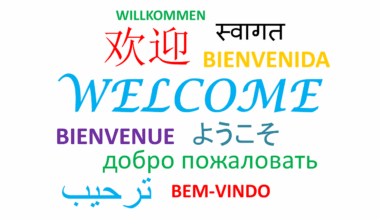Strategies for Integrating Mindfulness in Team Meetings
Mindfulness has become an essential practice in diverse aspects of life, with sports teams increasingly realizing its importance. Integrating mindfulness into team meetings can significantly enhance team cohesion and performance. One effective strategy is to begin each meeting with a short mindfulness exercise. This could involve deep breathing, focusing on the present moment, or doing a brief guided meditation. Such practices help team members to center their thoughts, reduce anxiety, and be more present during discussions. After this practice, people tend to communicate more openly and honestly, leading to better collaboration. Another strategy is to create a dedicated mindfulness agenda item during meetings. This allows the team to discuss mindfulness practices and share personal experiences or challenges. Encouraging dialogue about mindfulness fosters an inclusive environment where everyone feels valued. Additionally, using positive affirmations or encouraging team members to express gratitude can significantly enhance team spirit. Consider assigning certain roles to team members, such as a mindfulness champion, to keep mindfulness practices consistent. This spreads awareness and engages everyone in maintaining mindfulness as a team priority, reinforcing its significance in their routine interactions.
To further enhance the integration of mindfulness, it’s valuable to establish ground rules around how to conduct meetings. This includes actively listening when one person speaks while practicing patience and openness. By establishing norms that incorporate mindfulness principles, teams can foster deeper understanding and respect among members. Implementing a check-in process at the beginning of each meeting can also anchor everyone. This practice allows each participant to share their current feelings briefly. Sharing fosters connection and empathy, encouraging team support in challenging moments. Furthermore, incorporating brief pauses during meetings can be very helpful. These pauses allow members to reflect on what’s been discussed, formulate questions, and let ideas settle. This strategy promotes more thoughtful interactions and engenders critical thinking. Combining mindfulness with technology can also enhance participation and engagement. Utilizing tools such as meditation apps during team breaks can be beneficial. Teams can access guided sessions that create a sense of shared experience. Finally, providing resources for mindfulness, whether books or workshops, can encourage personal growth while reinforcing team dynamics.
Mindful Communication in Team Settings
Mindful communication is crucial for sports teams looking to enhance their dynamics through mindfulness practices. When teams focus on mindfulness during discussions, they cultivate an environment of respect and understanding. Practicing mindful communication involves being fully present when speaking and listening. This means avoiding distractions, allowing team members to express themselves without interruptions. Encouraging athletes to share thoughts and feelings openly strengthens bonds and fosters empathy. Moreover, teams can incorporate reflective listening techniques where members paraphrase what they’ve just heard. This practice not only validates the speaker’s feelings, but it also helps clarify messages, ensuring everyone is on the same page. Additionally, acknowledge and celebrate successes as a team continuously. Positive reinforcement boosts morale and hones in on shared values, which contributes to overall team cohesion. Another strategy is using non-violent communication techniques to address conflicts openly and constructively. Teaching team members how to articulate feelings without blame creates a healthier atmosphere. Furthermore, fostering a culture where constructive criticism is shared kindly enhances learning. Mindful communication empowers individuals and builds collective resilience, vital for high-performing teams.
Setting regular mindfulness goals can further improve team dynamics and overall wellness. Collaborating to establish group objectives pertaining to mindfulness not only encourages engagement but also accountability. For instance, a goal could be holding a mindfulness session every two weeks or possibly during high-stress periods. Such commitment strengthens bonds among team members, ensuring everyone participates actively. Team members can also explore various mindfulness activities together, promoting collective experiences. Examples may include yoga sessions, team walks, or nature retreats that immerse teams in tranquil environments. These activities help teams reconnect and enhance their emotional well-being. Furthermore, collaboration with skilled mindfulness coaches can transform team meetings into transformative experiences. Coaches can offer tailored strategies and techniques specific to team requirements. This professional guidance can also enable teams to deepen their mindful practices effectively. Finally, documenting personal experiences related to mindfulness within team meetings can track growth and highlight progress. This reflection enables objective assessment over time, promoting a culture of mindfulness continuously.
Building a Mindful Culture in Sports Teams
To build a mindful culture, consistency is key; therefore, integrating mindfulness into each team’s identity is fundamental. By embedding mindfulness in the team’s core values, athletes will appreciate its importance beyond just performance. Consider creating rituals that symbolize mindfulness during significant events, like pre-game gatherings or post-match reflections. These rituals can help reinforce the concept of being present and engaged. Teams may also engage in community projects to foster a sense of connection not just amongst themselves, but also with larger communities. When teams participate collectively, team members feel more grounded, united, and focused on common goals. Additionally, using symbolism such as specific colors or a mantra during games can serve as mindfulness reminders. Such symbols deepen athletes’ associations with mindfulness under pressure. Providing continuous learning opportunities related to mindfulness, such as workshops or seminars, encourages a culture of curiosity and personal development. As individuals grow, so does the team. Ultimately, fostering a mindful culture can create resilient teams capable of thriving under challenges, which is especially crucial in competitive sports scenarios.
Incorporating feedback loops into team practices allows for ongoing evaluation of mindfulness strategies. Regular reflection and assessment of how mindfulness initiatives impact team dynamics can lead to improved practices. Teams should consider setting aside moments, perhaps at the end of every month, for evaluating the mindfulness practices and their effects. This reflection phase can help identify specific strengths and weaknesses within the current approach. Furthermore, it also allows for sharing insights and suggestions among teammates. Efforts to adapt based on feedback generated can further optimize the shared mindfulness experience. Acknowledging the journeys of others through their struggles and growth fosters connection and inspires one another. Incorporating success stories related to mindfulness can spark motivation and positivity. Celebrate together as a team whenever milestones are achieved, even if small. This celebration reinforces collective commitment and reinforces unity. Additionally, providing resources such as forums or discussion groups can extend mindfulness discussions beyond meetings. Such platforms enable continued engagement with mindfulness principles, encouraging functional communication about individual experiences, thus enriching team dynamics.
Conclusion: A Mindful Future in Sports
The integration of mindfulness into sports teams is an ongoing journey towards personal and collective growth. As teams embrace mindfulness in meetings, they enhance communication and foster deeper connections among athletes. Practicing mindfulness cultivates psychological resilience, leading to a supportive and positive environment. Regular mindfulness exercises, open dialogues, and dedicated reflection periods contribute to effective team dynamics. By implementing thoughtful strategies, teams can effortlessly become more aware and driven. Cultivating a culture of mindfulness requires patience and effort, allowing everyone to grow individually and collectively. Moreover, fostering a sense of belonging within teams supports emotional well-being, enabling everyone to thrive. As teams continue down this mindful path, they will encounter enhanced collaboration, empathy, and understanding. Ultimately, the benefits may be visible not only through performance but also in the personal lives of each team member. Teams that commit to these mindfulness strategies positively impact their sporting achievements. The future of sports can become brighter with a united effort toward mindfulness in team dynamics, leading to empowered athletes and enriched experiences for all involved.


